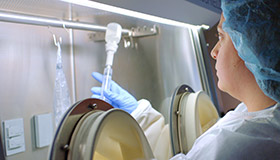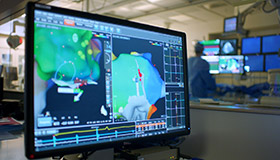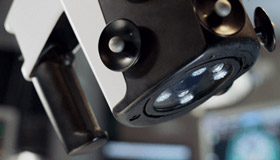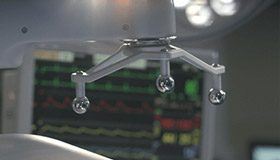Deep Brain Stimulation Shows Promise as Obesity Treatment
DBS offers hope to patients who have exhausted their weight loss options
“Many of my patients say their day is ruled by questions like, ‘what am I going to eat next?’,” said Neurosurgeon Donald Whiting, MD, system chair, Allegheny Health Network Neuroscience Institute. “Despite trying virtually every weight-loss approach, they are still hungry, they can’t lose weight or they lose it but can’t keep it off.”
For many of these patients, obesity doesn’t just affect their lifestyle, it affects their health. Conditions related to obesity include heart disease, stroke and diabetes. And in some cases, death.
“The ideal candidate for this procedure is someone who has met all the criteria for gastric bypass, had surgery, but still didn’t lose enough weight,” said Dr. Whiting. “We want to target the part of the brain that controls hunger and cravings so we can help people feel more full and satisfied. In effect, they won’t consume as much food.”
DBS may regulate brain activity responsible for hunger and weight
To perform deep brain stimulation surgery for obesity Dr. Whiting drills a tiny hole into each side of the brain. The hole is just deep enough to reach the lateral hypothalamus, which is responsible for feeding behavior and digestive functions. He then places a small electrode into both sides of the brain that will act like a pacemaker, but for the brain.
“Deep brain stimulation has been hugely successful for movement disorders like Parkinson’s,” said Dr. Whiting. “The electrodes help to regulate brain activity — sort of like how a thermostat regulates a furnace — by supplying low-level electrical current to the part of the brain that needs to be regulated.”
Initially, Dr. Whiting and his fellow surgeons found that there was a small area of the brain, a couple of millimeters in size, which was reactive at higher frequencies than is needed to correct movement disorders. The next step was to find the right amount of electrical current.
Dr. Whiting thinks of the DBS electrodes like an old transistor-style radio: if you’re not on a station at the right frequency you get static, or no signal at all. Part of their research, then, was identifying which electrical settings would most likely change the metabolic rate enough to start weight loss.
“Once we found the right setting – which we found dramatically boosts metabolism – we were able to set it at that and let it go in the patients in our study,” said Dr. Whiting. “And they lost weight.”
The electrodes placed in the brain are on continuously, keeping that portion of the brain at a consistent set-point for weight loss. Dr. Whiting said the electrodes can be put in and removed without consequence. “The procedure is reversible and adjustable. There are no side effects.”
More research is needed before DBS for obesity becomes standard of care
“We’re currently moving into the second phase of researching DBS for weight loss,” said Dr. Whiting. “We suspect everyone is born with a set point for weight and that we’re resetting patients’ weight thermostats with DBS. Continuing our study will help us know if that is true, and that the associated weight loss is permanent.”
Contact us
Request an appointment with one of our experts or get more information about the Neuroscience Institute.





